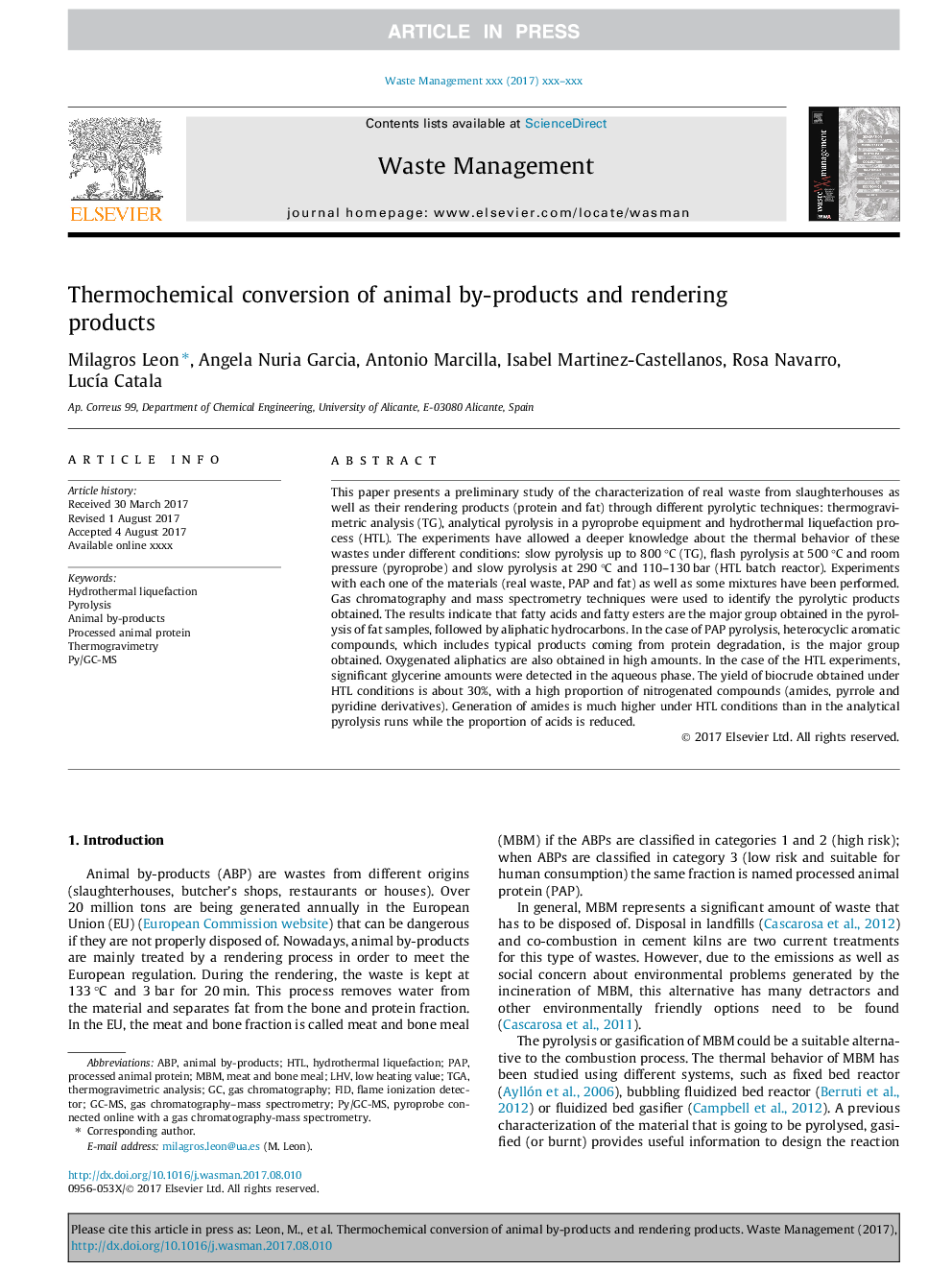ترجمه فارسی عنوان مقاله
تبدیل ترمو شیمیایی محصولات جانبی حیوانی و محصولات رندر
عنوان انگلیسی
Thermochemical conversion of animal by-products and rendering products
| کد مقاله | سال انتشار | تعداد صفحات مقاله انگلیسی |
|---|---|---|
| 84063 | 2018 | 17 صفحه PDF |
منبع

Publisher : Elsevier - Science Direct (الزویر - ساینس دایرکت)
Journal : Waste Management, Volume 73, March 2018, Pages 447-463

